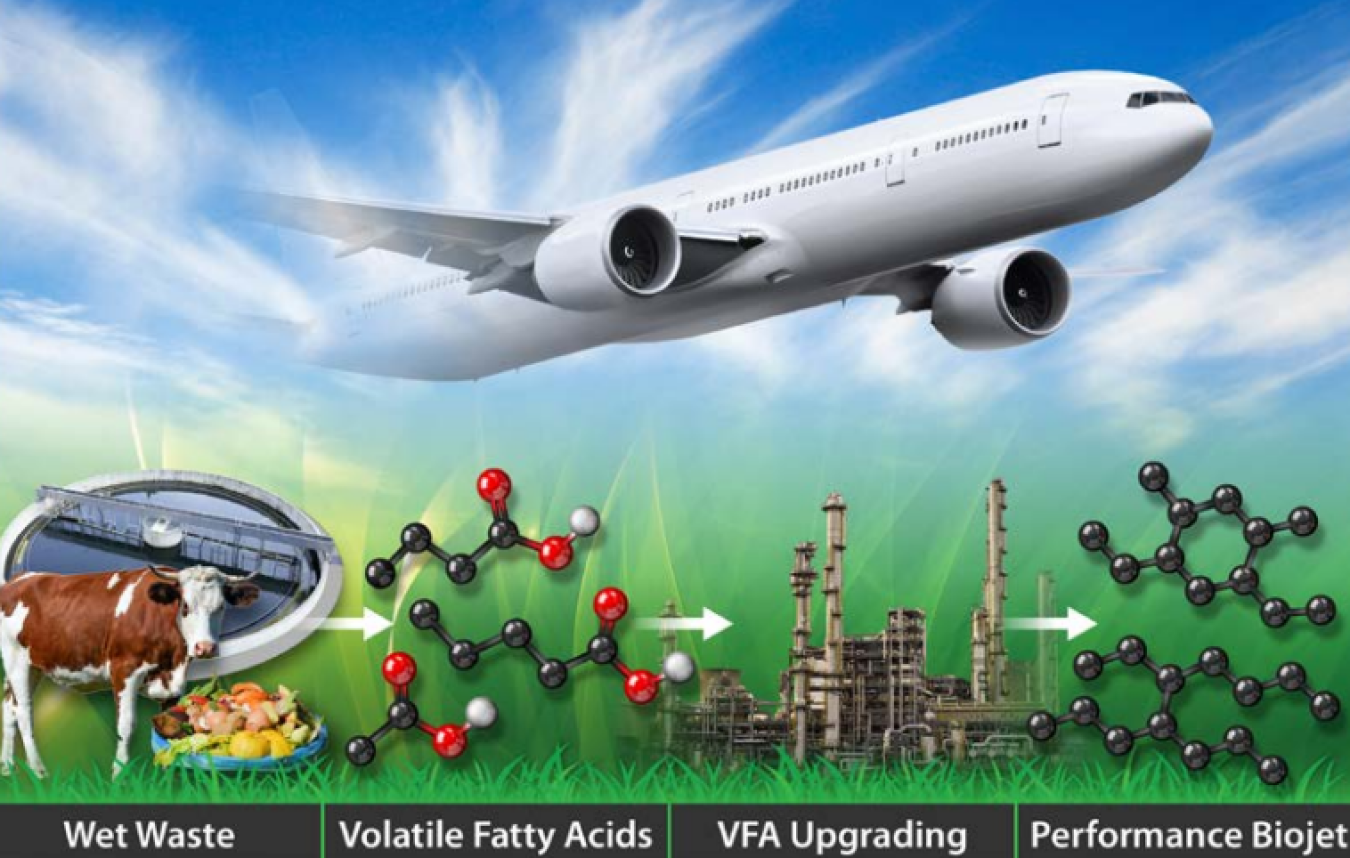NREL’s sustainable aviation fuel (SAF) from wet waste is produced using catalysts that build energy-dense hydrocarbons out of volatile fatty acids—made by fermenting wet waste in anaerobic digesters. The resulting SAF is compatible with existing jet engine
October 6, 2023
Wet waste—including food waste, manure, sewage, and inedible fats, oils, and greases—is a large source of methane emissions, a pollutant 20 times more potent than carbon dioxide. Scientists at the National Renewable Energy Laboratory (NREL) have created a biorefining process that reinvents methane-forming wet waste as a powerful tool for reducing emissions in aviation.
NREL’s sustainable aviation fuel (SAF) from wet waste is produced using catalysts that build energy-dense hydrocarbons out of volatile fatty acids—made by fermenting wet waste in anaerobic digesters. The resulting SAF is compatible with existing jet engines and has a carbon footprint as much as 165% smaller than conventional jet fuel. Producing the fuel diverts more greenhouse gas emissions from the atmosphere than are released by using the fuel in aircraft. If blended with conventional jet fuel, that emissions reduction enables net-zero-carbon flight.
This innovation is one U.S. Department of Energy Bioenergy Technologies Office-funded project among many that mobilizes national lab expertise, industry insight, and domestic resources to accelerate the deployment of climate-friendly SAF.
Learn more about SAF in Action here.

